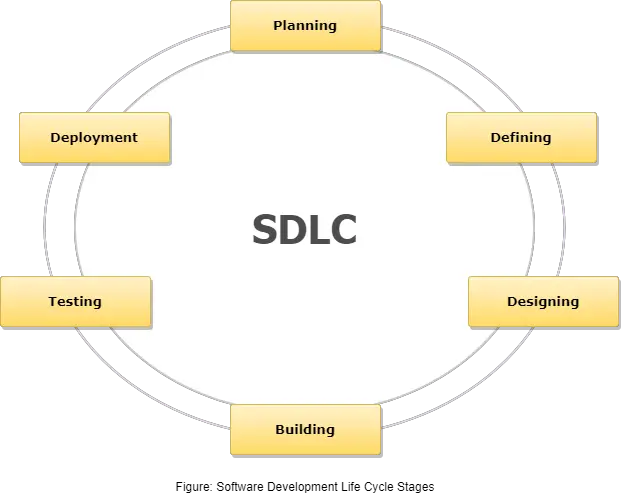What is SDLC?
One of the fundamental procedures of developing software in a step by step manner is by following the Software Development Life Cycle (SDLC). SDLC is a popular practice that is followed by different organizations for designing and developing high-quality software applications. It acts as a framework that holds some specific tasks to be achieved at every phase during the software development progression. This article will give you deep insight into the need for software development in various stages of SDLC.
Phases of the Software Development Life Cycle

The various phases of SDLC are explained below:
First Phase: Requirement Collection or Planning Phase
The prime focus of this phase is to gather the essential requirements from the customer. This information gets collected by the business analyst from their target customer(s) and plans the BRS (Business requirement Specification) for the development of the product. The team of all the designers and BA will do brainstorming to extract all the requirements and plan accordingly for the new system to be developed? Some popular questions that this meeting picks up are - Who will use the product? What must be the output data by the product?
Second Phase: Defining or Feasibility Study Phase
When the BRS documentation is done, there are another set of employees like Human Resource (HR), Finance Analyst, Architect, a Business analyst as well as Project manager will sit jointly discuss as well as analyze how to proceed and whether it is feasible and possible in the allotted budget. Such decisions are taken depending on the cost, resources, time, etc. Documentation is made, which is the SRS (Software Requirement Specification) document, which contains a detailed explanation of product requirements, right from design to development.
Third Phase: Designing Phase
This phase is when the design specification is organized from the prerequisite document when the project is approved to go further. This phase contributes to the next phase for development. This phase portrays a blueprint of the product, which helps to specify the hardware and requirements of your system as well as assist in crafting a significant architecture of your system.
Fourth Phase: Building or Coding Phase
As you are preparing with the design document, this phase deals with the developers to start writing the code or prepare for the engineering so that a prototype of the product can be created using some specific tools and techniques. This is considered the longest phase of SDLC.
Fifth Phase: Testing Phase
As your product is prepared for deployment, it needs a prior testing environment by the test engineers to check for bugs and run-time errors, and they check in this phase whether the functionality of the product is working as per the requirement or not. The bugs or defects which are encountered in the test phase are reported to the developers, who fix the bug and revert to the test engineers for further testing. This is an iterative process that continues until your application is free from bugs and defects and works stably.
Sixth Phase: Deployment Phase
Once your prototype or product is developed, tested, and completely in working form as per the requirement, and then it is installed or deployed in the customer's workplace or system for their use.
Seventh Phase: Maintenance Phase
This is an additional phase, and in many cases, this phase does not come under the count of SDLC, when your customer(s) begin using your product and encounter with some issues which they want us (as developers) to fix from time to time. The developer fixes the issue, and software testers test the product and hand it over the back to the customer.